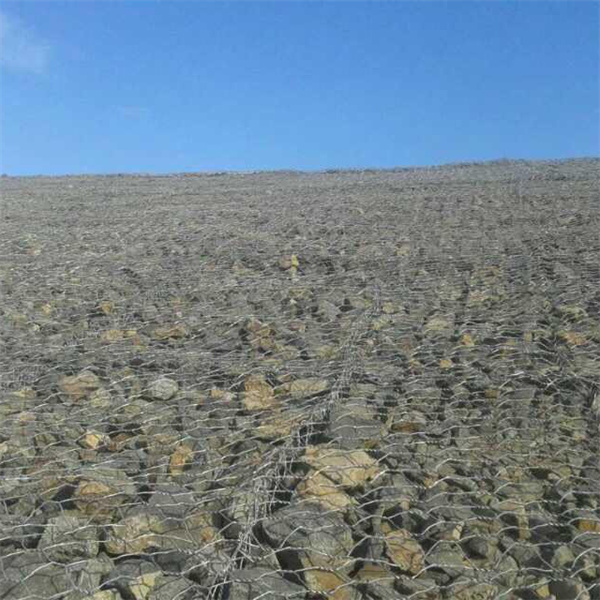Dec . 11, 2024 09:44 Back to list
Curved Gabion Cages for Enhanced Landscape Design and Erosion Control Solutions
Curved Gabion Cages A Modern Approach to Sustainable Construction
In an era where sustainability in construction is becoming paramount, innovative solutions are essential for building resilient and environmentally friendly structures. One such solution gaining popularity in recent years is the use of curved gabion cages. These versatile and aesthetically pleasing structures combine functional engineering with natural beauty, making them a preferred choice for architects, engineers, and landscape designers alike.
What Are Gabion Cages?
Gabion cages are wire mesh containers filled with various types of materials, generally stones, gravel, or even recycled concrete. Originating from military applications, where they were used to reinforce fortifications, gabion cages have evolved into a widely utilized tool in civil engineering, landscaping, and architecture. Their primary function is to provide stability, prevent soil erosion, and serve as effective retaining walls. However, their adaptability and aesthetic potential have unlocked new design possibilities, particularly with the introduction of curved forms.
The Benefits of Curved Gabion Cages
Curved gabion cages offer numerous advantages over traditional linear designs. Firstly, their shape allows for greater flexibility in design. Architects can integrate these structures into various landscapes, enhancing the overall visual appeal while serving a functional purpose. The organic curves mimic natural forms, allowing buildings and landscapes to flow seamlessly into their surroundings.
Secondly, curved gabion cages distribute pressure more evenly compared to straight structures
. This characteristic makes them particularly effective in applications where ground movement or settling might occur. The inherent flexibility of the curved design allows the cages to absorb and adapt to stress without compromising their integrity, making them ideal for use in earthquake-prone areas or coastal regions vulnerable to erosion.curved gabion cages

Moreover, gabion cages are an eco-friendly option. They can be filled with locally sourced materials, reducing the carbon footprint associated with transporting building supplies. The use of natural stones or recycled materials not only minimizes environmental impact but also enhances local ecosystems. Over time, vegetation may grow among the stones in the gabions, further blending the structures into the landscape and supporting biodiversity.
Applications in Modern Design
Curved gabion cages are being employed in various applications, ranging from landscape architecture to urban design. Their implementation can be seen in park benches, retaining walls, decorative screens, and even large-scale structures like amphitheaters and sound barriers. For instance, in urban areas, they can serve as noise barriers while simultaneously adding aesthetic value to otherwise austere environments.
In landscape design, curved gabion walls can create beautiful garden terraces, swimming pool enclosures, or impressive entry features to public spaces. Their porous nature allows for natural drainage, reducing the risk of water accumulation and promoting healthy plant growth. Additionally, these structures can be crafted to guide and channel waterflow, preventing flooding and erosion in vulnerable areas.
Conclusion
The rise of curved gabion cages in modern construction reflects a growing commitment to sustainability, aesthetics, and functionality. Their ability to adapt to a variety of designs while providing essential engineering benefits makes them a powerful tool in any architect’s or landscape designer’s toolkit. As our cities continue to evolve, embracing innovations like curved gabion cages will be crucial for creating spaces that are not only beautiful but also resilient and environmentally sustainable.
In conclusion, as we advance into the future, the continued exploration and implementation of materials like curved gabion cages will play a vital role in shaping our built environment. The integration of natural elements with modern engineering approaches signifies a step towards achieving harmony between human-made structures and the natural world. By choosing to incorporate such innovative solutions, we not only enhance the aesthetic quality of our surroundings but also move closer to a sustainable future in construction.
-
Wire Mesh Thickness Impact on Gabion Wall Load Bearing
NewsAug.12,2025
-
Ultimate Guide to Hexagonal Gabion Box
NewsAug.12,2025
-
Types of Rocks for Gabion Baskets Durability and Aesthetics
NewsAug.12,2025
-
Standard Gabion Box Sizes and Their Industrial Applications
NewsAug.12,2025
-
Easy Guide to Building Garden Gabion Cages at Home
NewsAug.12,2025
-
Drainage Solutions for Gabion Mesh Structures
NewsAug.12,2025
-
Visualizing Gabion 3D Integration in Urban Landscapes with Rendering
NewsJul.23,2025






